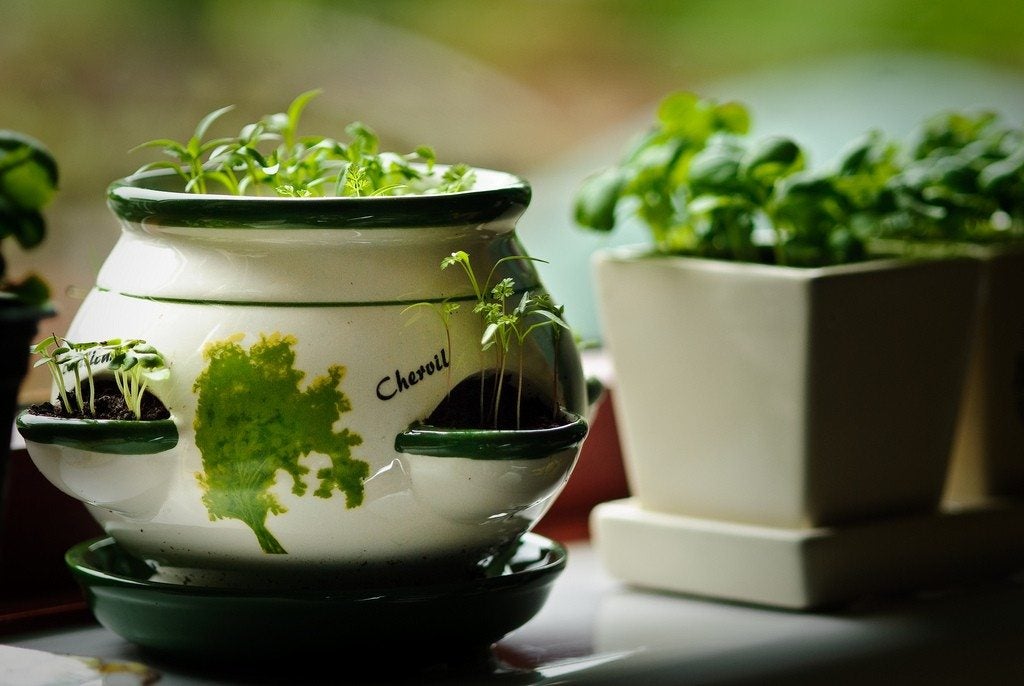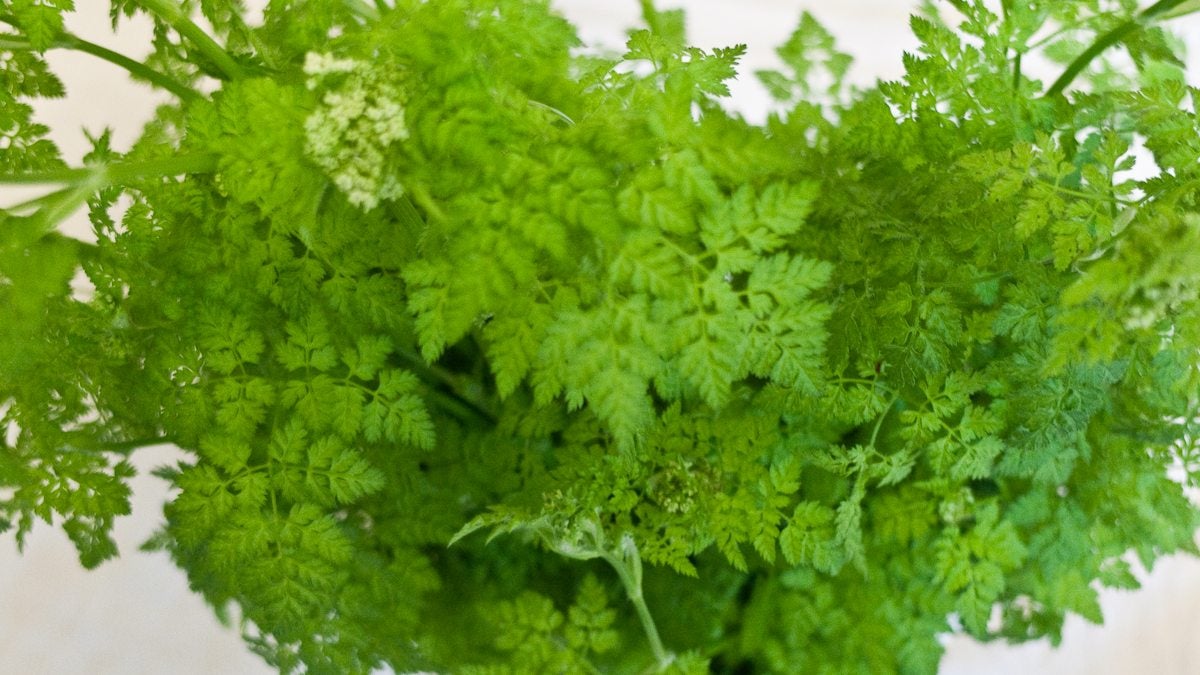Indoor Chervil Plants: How To Grow Chervil Indoors


When you're starting your indoor herb garden for convenient culinary use, be sure to include some indoor chervil plants. Growing chervil indoors provides you an abundance of the delicately scented, annual herb for cooking. Chervil is an integral part of the "fines herbes" blend (a combination of finely chopped herbs) used in French cooking. Growing the plant indoors is an optimum use of the herb, as it does not flourish outside in hot summer heat and sun. When growing chervil indoors or outside, plants prefer light shade and cool temperatures. Garden chervil (Anthriscus cerefolium) should not be confused with turnip rooted chervil. Rooted chervil is obscure in American and British food, but is still sometimes used in French cuisine. The chervil discussed here is similar in appearance to flat leaved parsley, with a more delicate flavor and demeanor. It is sometimes called gourmet's parsley.
How to Grow Chervil Indoors
Seeds of indoor chervil plants should be planted into their permanent container or started in biodegradable seed starting pots that can go directly into rich, organic soil. The tap-rooted plant does not transplant well. Plant the small seeds shallowly. Keep the soil moist, but not soggy, to avoid the seeds rotting or damping off after germination.
Caring for Chervil Plants
Chervil plants reach 12 to 24 inches (31-61 cm.) in height. Caring for indoor chervil plants should include frequent clipping of the new growth on the top of the plant. Clippings of the plant are best used fresh. Regular trimming of top leaves makes the plant bushier and more attractive and slows the tendency of growing chervil indoors to bolt. If bolting happens often when growing chervil indoors, start new plantings every few weeks to maintain a continuous supply. When plants seem to be going to seed quickly, decrease the sunlight and move the container to a cooler location. Use fresh seed for the best germination rate when growing indoor chervil plants. Companion plants for growing chervil indoors can include tarragon, chives, and parsley; also used in the French fine herbes mix. Locate indoor chervil plants in the container so they can be shaded by the other herbs.
Uses for Indoor Chervil Plants
Growing chervil indoors, in or near the kitchen, makes it convenient to use the herb in many dishes you may be preparing. Now that you've learned how to grow chervil indoors, use clippings often. The frilly leaves of chervil plants may be finely chopped and added to omelets or other egg dishes. Chervil flavors young vegetables, soups, salads, casseroles, and a variety of other recipes.
Gardening tips, videos, info and more delivered right to your inbox!
Sign up for the Gardening Know How newsletter today and receive a free copy of our e-book "How to Grow Delicious Tomatoes".

Becca Badgett was a regular contributor to Gardening Know How for ten years. Co-author of the book How to Grow an EMERGENCY Garden, Becca specializes in succulent and cactus gardening.
-
 Grow ‘Karl Rosenfield’ Peony Plants For The Ultimate Frilly Border Beauties And Cut Flowers
Grow ‘Karl Rosenfield’ Peony Plants For The Ultimate Frilly Border Beauties And Cut FlowersFor frilly double magenta peony petals infused with a heady fragrance, grow ‘Karl Rosenfield’ peony plants. Here’s how to cultivate the ultimate plushy blooms
By Tonya Barnett
-
 10 Common Composting Problems That Can Spoil Your Garden Gold – Plus Easy Fixes
10 Common Composting Problems That Can Spoil Your Garden Gold – Plus Easy FixesLearn how to troubleshoot common composting issues before they ruin your stash – from bad smells and bugs to materials not breaking down as they should.
By Susan Albert
